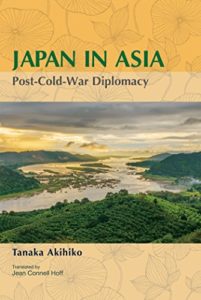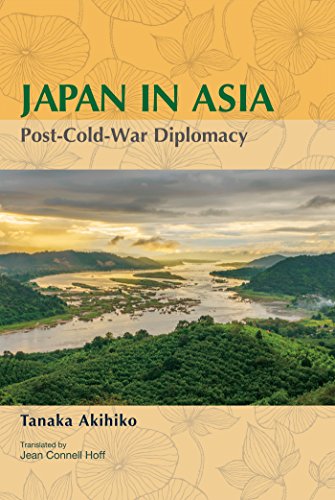by Tanaka Akihiko (transl. Jean Connell Hoff)
Book Review by Chad Kohalyk
Japan in Asia opens with the provocative line “Asia is becoming one.” Author Tanaka Akihiko writes that it might be “possible to say that a common culture—what might be called an ‘East Asian way of life’—may be emerging, especially among the East Asian urban middle class.” Tanaka teases this proposition, and although he is not ready to commit, he spends much of this considerable chronological history presenting suggestive evidence for an emerging regionalization of East Asia, and Japan’s hand in it. Against a background of political, financial, and nuclear crises, as well as historical and territorial disputes, Tanaka draws attention to two factors driving Asia towards unity: globalization and democratization.
Pointing out that globalization often leads to more regional cohesiveness, Tanaka chronicles the rise of important regional frameworks such as ASEAN+3. Southeast Asia has become the hub of cooperation for all of East Asia, especially as relations between the Northeast Asian states continue to deteriorate. Is it any wonder why the newly minted Japanese prime minister Suga Yoshihide’s first trips abroad were to Vietnam and Indonesia? Regional economic integration has been furthered with the signing of the Comprehensive and Progressive Agreement for Trans-Pacific Partnership (CPTPP) and most recently the Regional Comprehensive Economic Partnership (RCEP).
As for democratization, Tanaka points out that since the rise of popular democratic movements in the 1980s, we have seen a number of East Asian countries transform into democracies such as South Korea, Taiwan, the Philippines and Indonesia. Even if a region isn’t fully free, the trend of countries moving away from authoritarianism has been a feature of the post-Cold War era (despite some backsliding in recent years). Japan has had a hand in this trend, as outlined in the book.
The power of these two forces notwithstanding, the road to regionalization has been bumpy. Many regional frameworks were forged in the fires of regional crises, and the author emphasizes the role of domestic politics as a constraint to the formation of foreign policy. When describing decisions and actions of different countries Tanaka takes care to name the people involved. This is especially important in the case of Japan which has seen seventeen prime ministers since 1989. Relationships with neighbouring countries are highly dependent on the proclivities and the personality of the prime minister, and a lack of continuity in Japan’s foreign policy has been demonstrated time and again.
Tanaka ends his book on a largely positive note, but still takes care to warn of the familiar threats to stability in hot-spots such as North Korea, the Taiwan Strait, and the East and South China Seas. His evidence shows that the Fukuda Doctrine of forty years ago was successful, in that Southeast Asia perceptions of Japan are much more positive. But for China and the Koreas there is more “heart-to-heart contact” needed. Japan might consider this legacy as it pursues former Prime Minister Shinzo Abe’s Free and Open Indo-Pacific strategy. Asia might be heading towards becoming “one” far off in the future, but Japan in Asia shows that as far as Japan is concerned, there are currently two Asias.


